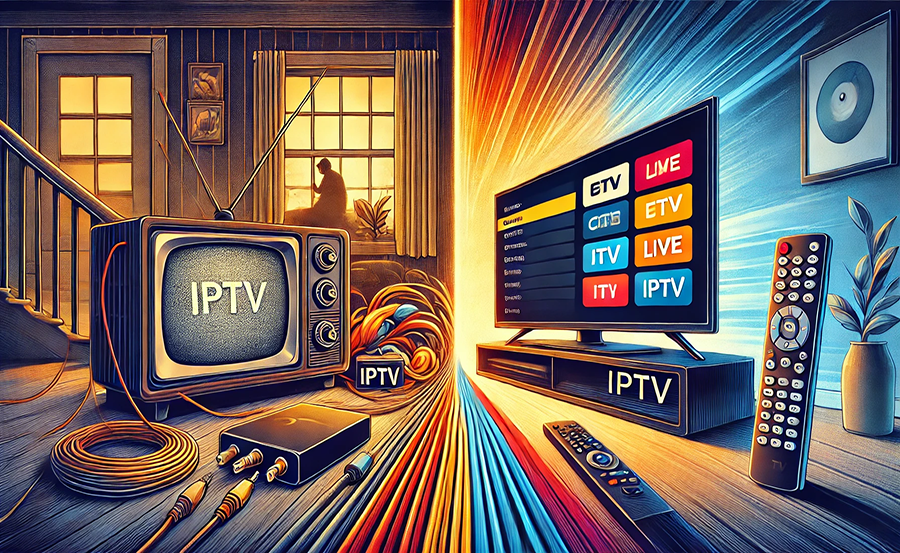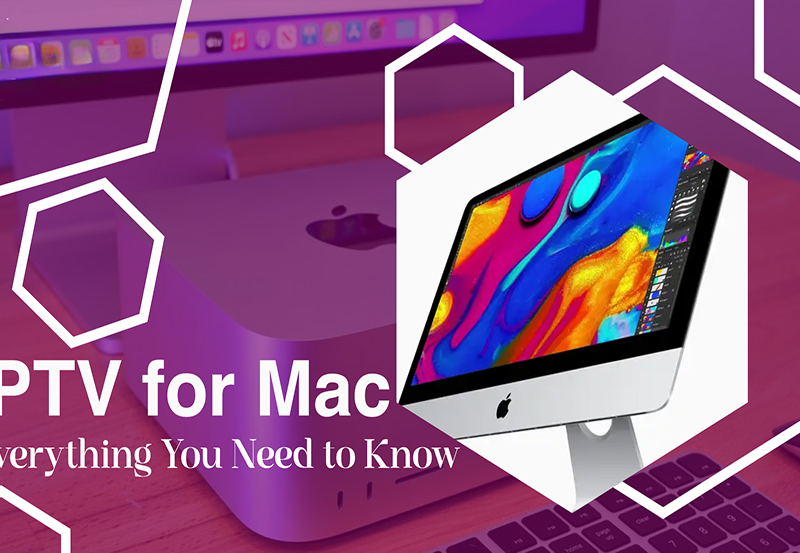Introduction
Welcome to the world of IPTV on Linux—an exciting frontier for television enthusiasts and tech-savvy users alike. Whether you’re a brand-new Linux adopter or a seasoned veteran looking to expand your entertainment options, you’re in the right place. In this guide, we’ll walk you through everything you need to transform your Linux machine into a personalized IPTV experience. By the end of this article, you’ll understand how to get started, optimize your setup, and enjoy seamless streaming. Let’s dive in without any further ado.
Understanding IPTV: An Overview
What Is IPTV?
IPTV, or Internet Protocol Television, is a way of streaming television content over the internet instead of traditional terrestrial, satellite, or cable formats. It allows viewers to access a wide range of channels and programs through their broadband connection, offering flexibility and variety that traditional TV methods might lack. This modern method of broadcasting opens up avenues for on-demand content alongside live TV.
How Does IPTV Differ from Traditional TV?
Unlike traditional broadcasting that relays content via satellites or cables, IPTV streams content directly through your internet connection. This shift provides several advantages such as on-demand programming, the ability to personalize viewing experiences with M3U playlists for IPTV, and the option to watch content on a wide range of devices.
Expert Streaming Tip:
Stream the best content from the USA with Best IPTV for USA for unlimited entertainment options.
Why Choose Linux for Your IPTV Needs?
Linux is known for its flexibility, security, and open-source community support, making it an excellent choice for IPTV enthusiasts. The operating system allows users to tailor their IPTV experience with specific software and configurations, ensuring you maximize your IPTV experience specifically to your preferences.
Setting Up IPTV on Your Linux System
System Requirements
Before diving into the world of IPTV on Linux, ensure your system meets some basic requirements:
- A stable internet connection – broadband is recommended for buffering-free experience.
- Linux OS – Ubuntu or Fedora are popular choices for IPTV purposes.
- Multimedia players like VLC or Kodi to handle media streams.
Choosing the Best IPTV Service
Finding the right IPTV service is key to a successful setup. Consider factors like channel selection, subscription costs, and customer support. Research user reviews and check for trial offers to ensure the service meets your needs before committing.
Installing IPTV Player Software
Choosing the right software is crucial. VLC and Kodi are popular options due to their compatibility with multiple broadcast formats and ease of use. Installing them on Linux is relatively straightforward and typically involves downloading from the software center or installing via command line.
Installing VLC on Linux
To install VLC, open your terminal and enter the following command:
sudo apt-get install vlcFollow any on-screen instructions to complete the installation process.
Configuring Kodi for IPTV
Kodi requires a bit more setup. After installation through your package manager, add the IPTV Simple Client via the “Add-ons” section within Kodi. Configure it with your chosen IPTV service’s M3U playlist URL.
Maximizing Your IPTV Experience
Customizing Your Viewing Preferences
One of the great advantages of IPTV on Linux is the ability to customize. Adjust settings within your player to optimize playback quality, audio options, and subtitle displays. Familiarize yourself with keyboard shortcuts in VLC or Kodi to enhance navigation speed and convenience.
Maintaining Quality and Reducing Buffering
Buffering can significantly impact the IPTV experience. To minimize it, ensure your internet speed is adequate. Use a wired connection if possible as it tends to be more stable than Wi-Fi. Additionally, close unnecessary applications on your device to free up resources.
Managing M3U Playlists for IPTV
M3U playlists are key to accessing a wide array of channels on IPTV. Update these playlists regularly as providers might change channel URLs. Customize playlists to feature only channels you watch frequently, reducing clutter and making navigation easier.
Troubleshooting Common IPTV Issues
Dealing with Stream Freezing or Buffering
If streams frequently freeze or buffer, check your internet connection speed first. If it’s stable, the issue might be with the IPTV service itself. Sometimes, switching servers or refreshing your playlist can help resolve these issues.
Addressing Access Problems
Occasionally, you might face access issues with certain channels or playlists. Double-check your M3U URLs for typos or outdated links. Ensure your subscription is active and that your service provider hasn’t experienced outages.
Enhancing Security Measures
Security is crucial when streaming from unknown sources. Use VPN services to protect your data and maintain privacy. Regularly update your Linux system and IPTV player software to shield against vulnerabilities.
Exploring Advanced IPTV Features on Linux
Recording IPTV Streams
Some multimedia players allow users to record live streams for later viewing. Explore add-ons or extensions in Kodi or adjust VLC settings to record content. Ensure that recording is permitted under your IPTV service agreement.
Integrating EPG for Enhanced Viewing
Electronic Program Guides (EPGs) enhance user experience by providing detailed channel information and scheduling. Many IPTV services offer EPG data, which can be integrated into your player for easier browsing and scheduling content to watch.
Utilizing Raspberry Pi as an IPTV Box
If you’re inclined towards hands-on projects, consider converting a Raspberry Pi into an IPTV box with Linux. Use software like OSMC, a Linux-based distro that’s optimized for media playback, to transform your Pi into a powerful IPTV device.
Conclusion: Your Path Forward in IPTV on Linux
Embracing IPTV on Linux opens a world of diverse content with numerous customization opportunities. While it might seem daunting at first, the steps outlined in this guide are straightforward once you’re familiar with the basics. By choosing the right IPTV service, installing the appropriate software, and tweaking your setup, you can ensure an optimal viewing experience tailored to your preferences.
Remember to stay updated with the latest software developments and maintain good internet practices to secure your connection. The freedom to customize and innovate is what makes Linux a rewarding choice for IPTV—allowing you to explore and craft your unique entertainment experience. Happy streaming!
FAQ Section

What is the best IPTV service for Linux?
There isn’t a one-size-fits-all answer as the best IPTV service depends on individual needs such as channel preferences and budget. Services like IPTV Smarters or TiviMate are popular based on user reviews.
How do I optimize my Linux device for IPTV streaming?
Ensure your system is regularly updated, use a wired internet connection for stability, and optimize the software settings in your media player to enhance performance and minimize buffering.
Can I use a VPN with IPTV on Linux?
Yes, using a VPN is advisable as it enhances your privacy and security while streaming. Many VPN services have native Linux support to integrate smoothly with your system.
Is there a legal issue with using IPTV on Linux?
The legality depends on the IPTV service. Always choose services that hold the necessary broadcasting rights to avoid potential legal complications.
How do I update my M3U playlists on Linux?
Update your playlists within the IPTV player settings by obtaining the latest M3U URL from your service provider and replacing the old URL with the new one.
What if I face buffering issues while streaming IPTV?
Check your internet speed and stability. If these are adequate, try refreshing your connection, switching servers, or updating your playlist links. If the issue persists, contact your IPTV provider for support.
Maximize Your Entertainment: Replacing Cable TV with Amazon FireStick




